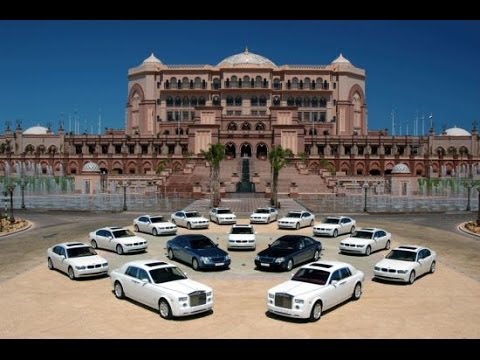The Emirates Palace is a seven star luxury hotel in Abu Dhabi, United Arab Emirates.
Emirates Palace is located on 1.3 km of private beach and surrounded by 85 hectares of gardens, with 114 domes that are 80 meters high. It is a 30 minute drive from Abu Dhabi airport and 1.5 hours drive from Dubai airport.

The building was designed by architect, John Elliott RIBA, who was Senior Vice President at Wimberly, Allison, Tong and Goo, (WATG) an international firm specialising in Luxury Hotels. It opened in November 2005 but certain restaurants and spas did not open until 2006. The hotel was built by and is owned by the Abu Dhabi government, and is currently managed by the Kempinski Group.
The costs to build the hotel were 3.9 billion GBP or 11.02 billion AED or about 6 billion USD. The Emirates Palace occupies 850,000m² of floor space. Underground parking allows housing for 2,500 vehicles. There are two swimming pools and spas. The hotel has its own marina and helipad. The Emirates Palace is the second most expensive hotel ever built, only surpassed by Marina Bay Sands in Singapore.

Room rates at Abu Dhabi’s Emirates Palace rose by more than a quarter last year as guest numbers topped 150,000. A 26 per cent rise in rates helped revenue per available room — the standard measure used by hotels — reach one of its highest levels since it opened in 2005, said the hotel manager Alexander Schneider.
“Despite the opening of many other luxury hotels and resorts in Abu Dhabi, Emirates Palace has continued to achieve a very high performance over the past years,” said Mr Schneider.
![]()
![]()
The hotel, meanwhile, hopes to raise its international profile further — as a backdrop for film productions. “Emirates Palace is the only venue in the region qualified to offer a unique backdrop for film shootings and to curate a movie premiere screening in its auditorium at the same time,” Mr Schneider added.
Abu Dhabi is expected to add as many as 6,000 new hotel rooms over the next three years according to CBRE Middle East, the property broker.
“There is still a lot of supply to come up but that also makes it far more affordable than Dubai and travellers from within the UAE will remain one of its key markets,” said Matthew Green, the head of research and consultancy at CBRE. The broker expects hotel occupancy in Abu Dhabi to rise from about 65 per cent in 2012 to about 70 per cent this year.


Emirates Palace is currently focusing on Chinese, Indian and Latin American markets as Etihad Airways funnels more travellers from those countries through the emirate. India is Abu Dhabi’s largest tourism market in terms of the number of guests.
Emirates Palace has also become a popular wedding venue for families from India, Russia and China, said Mr Schneider.
The capital’s flagship hotel is owned by the Government of Abu Dhabi, and is managed by the Geneva-based Kempinski Hotels.
Abu Dhabi hotel operators are benefiting from rising visitor numbers to the country.



